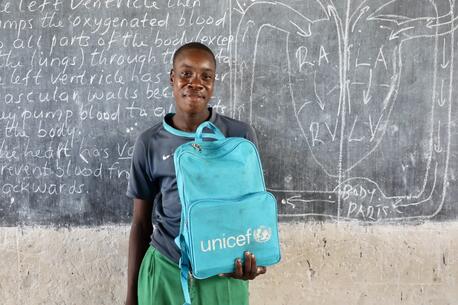
Parenting: Teaching Your Child Healthy Habits
Parents and caregivers can teach kids to make good choices around eating, sleeping and personal hygiene. These and other healthy habits can protect them physically and mentally — now and in future. Learn how.
How to teach your child the benefits of a nutritious diet and encourage healthy eating habits
A healthy diet dense with nutrients will power your child for a healthy life. But a diet that is lacking in adequate nutrition — one high in saturated fat and sugar, for example — can lead to obesity, high cholesterol, high blood pressure, diabetes and other health issues later.
Teaching your child about healthy eating from a young age will help them develop a positive relationship with food. Parents and caregivers can set a good example.
Helping kids develop healthy eating habits includes teaching them — and encouraging them — to:
- reaching for healthy foods, beverages and snacks yourself
- putting healthy, whole foods on the table at mealtimes
- eating a variety of whole fruits, vegetables, whole grains, lean protein, dairy and fortified soy (as a dairy alternative) — the wider the range of a child's food experiences early on, the more likely they will go on to eat a variety of foods from all five food groups
- avoiding processed and other foods that contain added sugars and saturated fat and are high in sodium
- avoiding soda, sports and energy drinks and fruit juice
- limiting snacking and try for healthy treats such as apple slices with peanut butter
Start the day by eating a healthy breakfast — choosing things like plain yogurt and fresh fruit over sugary cereals or pastry — and encourage children to do the same. A balanced first meal provides children with important nutrients they need for healthy growth and development, such as calcium and fiber.
Make family dinners routine, and vary the foods you offer so your child develops a broad palate for healthy options. Use mealtimes as a learning opportunity – look up the different food groups together and discover the nutrients and vitamins the body needs. Include children in some of the decision-making as well as in preparing the meal.
Maintaining a healthy relationship with food is just as important as eating right
Having a healthy mindset around eating is key for lifelong health and protecting against illnesses like heart disease, cancer and diabetes. Parents and caregivers can help guide young children by:
- helping them understand what it means to be physically hungry, so they are better in tune with their body's needs
- not using food as a reward or punishment
- not taking sweets or other "bad" foods completely off limits, as this can backfire; offer alternatives and explain why a piece of fruit, say, is better than candy
- letting children stop eating when they have had enough — letting go of "clean your plate" rules
- avoiding talk of dieting and any discussions about weight
- never shaming children into avoiding food that is bad for them
If you can’t get your child to eat their veggies...
Try to have them see you eating and enjoying them yourself. mix with other foods you know they like. cut them into funny shapes or arrange them in a way that makes them more appealing or fun. And if at first you don't succeed, keep trying, and don't give up.
Tips about portion size
It's important for parents and caregivers to teach children about portion size early on. Show kids what you mean by how much is enough/not too much to help them understand.
A closed fist is recommended for carbohydrates, such as pasta, rice or cereal. A meat portion should be roughly the size of their palm. A pat of butter should be no bigger than the top of their thumb.
The USDA's Healthy Plate website offers a tool for generating a personalized MyPlate Plan based on age, gender, height, weight, and physical activity level.
For recommendations on nutrition by age, visit myplate.gov
How to make sure your child gets a good night's sleep
Kids need sleep for healthy growth and development and to function while awake. Getting too little sleep can make it difficult for a child to pay attention in school. It can also lead to depression and other health problems.
Lack of sleep — all too common among high school kids — can contribute to weight gain, alcohol consumption, drug use and other negative behaviors.
Good sleep hygiene includes:
- establishing a routine, including set times for when a child goes to bed and when they wake up; the American Academy of Pediatrics suggests brush, book, bed
- turning down the lights before bedtime and letting the morning light in; each acts as a sleep/wake cue
- setting a screen-time curfew: a set time at night when kids must turn off the TV, stop playing video games, and power down the computers and cell phones; if possible, keep devices out of the bedroom
- maintaining a quiet, relaxing bedroom environment; calming music or sounds may help
- winding down at least a half hour before bedtime
How many hours of sleep someone needs varies according to age. Advice from the U.S. Centers for Disease Control for...
- infants 4-12 months: 12-16 hours per 24 hours (including naps)
- toddlers aged 1-2 years: 11-14 hours per 24 hours (including naps)
- preschoolers aged 3-5 years: 10-13 hours per 24 hours (including naps)
- children aged 6-12 years: 9-12 hours per 24 hours
- teens aged 13-18 years: 8-10 hours per 24 hours
- adults aged 18-60 years: 7 or more hours per night
Making sure kids get enough exercise
Exercising daily is important for good health at every age. And the more time spent sedentary, the higher the risks of obesity, depression and anxiety.
The amount of physical activity a child needs for good health depends on age. Kids ages 3 to 5 should be active throughout the day. Kids aged 6 and older need at least 1 hour of exercise per day — a physical activity that includes aerobic movement, muscle strengthening and bone strengthening activities.
If you can, involve your child in parts of your own exercise routine when they are young. Just going for a walk outside can help them start to think of exercise as a fun activity.
Limit sedentary screen time to 1 to 2 hours per day — encouraging active games that require movement instead.
How to teach children about healthy hygiene
A person's hygiene directly impacts their own health and the health of others, so maintaining good personal hygiene — keeping hands, face, feet, hair and fingernails clean — is vital.
Handwashing is one of the cheapest, easiest and more important ways to protect against illness. If done properly and at the right times, it can reduce the risk of colds and similar bugs by as much as 21 percent. It can also prevent outbreaks of foodborne illness. And it can cut down the number of school days missed.
Here are some tips on how to turn handwashing into a healthy habit for life:
Explain the benefits of handwashing in a way that children can understand
Let your child know why it's important to wash their hands frequently. Tell them it keeps them safe from bacteria and viruses that can make them and others around them sick. And that even if they can't see the germs, they could still be there.
Explain — and demonstrate — the right way to wash hands
A quick wash and rinse isn't enough to get rid of all infection-causing germs. Explain and demonstrate to kids how to wash their hands properly, and for at least 20 to 30 seconds. That's about as long as singing the Happy Birthday song twice.
Show them how to wet their hands with clean running water, how to lather up with soap, how to get in between fingers and under fingernails, how to dry hands using a clean cloth or single-use towel. (Germs spread more easily from wet skin than from dry skin, so drying your hands completely is an important step.)
If soap and water are not readily available, using hand sanitizer that is at least 60 percent alcohol is an acceptable alternative. Spend at least 20 seconds rubbing the sanitizer on your hands and remind kids that it can be toxic if swallowed (and supervise young children while using it).
Fun fact: You can use any temperature of water to wash your hands. Cold water and warm water are equally effective at killing germs and viruses – as long as you use soap.
Remind kids when they should wash their hands
Knowing how to wash hands properly is only half the battle. Kids need to know how often they should be doing it, and when — before and after eating, after using the toilet, after petting a dog, after playing outside, after coughing or sneezing, etc.
Make handwashing fun — and easy
Turning handwashing into a fun family activity is one way to ensure it becomes a lifelong habit for your child. Make it easy for small children to reach the faucet by providing a stool and offering colorful soap that is within reach.
Teaching kids the importance of brushing teeth 2x a day
Cavities are common for children in the U.S. — and when untreated, they can be painful and even lead to infection. Studies have shown that children with poor oral health often miss more school than other kids, and their grades suffer.
Experts say it's best to start cleaning your child's teeth as soon as they start coming in. By age 7 or 8, kids should be able to brush their own teeth. Ideally, that means brushing twice a day with a soft brush, using a circular motion, and going easy on the gums. It means brushing for 2 minutes, after breakfast and before bedtime.
Flossing is also important. Try to get your child to floss at least once a day.
For more best practices around personal hygiene for all ages, visit cdc.gov
Teaching kids how to support their own mental health
Parents and caregivers can teach children and teens good habits that will help protect their mental health. For example:
Encouraging extra-curricular activities: Encourage kids and create opportunities for them to experiences things outside of school, activities related to sports or music, art, nature or volunteering.
Introducing de-stressing techniquies: Deep breathing is one way to try to control anxiety and stress. KidsHealth.org offers how-to videos here. Limiting screen time can also help.
Talking and spending time with kids: Building strong bonds with your children with help foster their mental well-being. They also prevent negative behaviors like drug use.
Learn more about how to support your child's mental health.


